Modeling and Simulation of Physical Systems Formed by Bond Graphs and Multibond Graphs
Abstract
:1. Introduction
2. Modeling in Bond Graphs and Multi-Bond Graphs
2.1. 1-Ports Active
2.2. 1-Ports Passive
2.3. 2-Ports
2.4. 3-Ports
3. A Mathematical Model of a System Composed of MultiBond Graphs and Bond Graphs
- Bond graph section:
- –
- Elements of energy supply sources denoted by with variables
- –
- Energy storage elements denoted by :
- *
- In integral causality assignment with state variables and co-energy vector determining linearly independent state variables.
- *
- In derivative causality assignment with state variables and co-energy vector determining linearly dependent state variables.
- –
- Detection elements for system outputs denoted by with variables .
- –
- Energy dissipation elements denoted by with variables and .
- –
- The different elements of a system , , and are connected by the 0 and 1 junctions or by transformers and gyrators modulated by variables or constants.
- Multibond graph section:
- –
- Source multiport elements denoted by with multiport input variables
- –
- Storage multiport fields denoted by :
- *
- In integral causality assignment with multiport state variables and multiport co-energy vector that determine linearly independent multiport state variables.
- *
- In derivative causality assignment with multiport state variables and multiport co-energy vector that determine linearly dependent multiport state variables.
- *
- These fields can be used to connect the multibond graph and bond graph sections according to the system characteristics.
- –
- Multiport detection elements denoted by with multiport outputs .
- –
- Multiport energy dissipation denoted by with multiport variables and .
- –
- Multiport junctions , modulated multiport transformers and modulated multiport gyrators are used to connect the different multiport elements , , and . In addition, these transformers or gyrators can be used to connect this section of the multibond graph with the section of the bond graph.
4. Case Studies
4.1. Synchronous Generator
- The stator windings are sinusoidally distributed along the air gap.
- The inductance of the rotor with its position does not cause variation due to stator slots.
- The phenomena of hysteresis and magnetic saturation are not taken into account.
- The armature phase windings are with phase voltages and currents and , respectively; denote the stator phase resistances, and denote the stator phase self inductances.
- The field winding is f with voltage and current in this winding; and denote resistance and self inductance of this winding, respectively.
- The damping circuit on the d-axis is D with voltage and current denoted by and , respectively; and denote the resistance and self inductance of this winding, respectively.
- The damping circuit on the q-axis is Q with voltage and current denoted by and , respectively; and denote the resistance and self inductance of this winding, respectively.
- The section of the armature winding is in coordinates , to which the multiport resistor with multibond 2 and multiport inductance with multibond 3 are connected. The multiport effort source 17 in coordinates is connected to a multiport transformer modulated with the Park transformation matrix so that the multibond 10 has a multiport effort equivalent to the voltage in coordinates . The multibond 14 is the stator–rotor connection in a synchronous generator through a multiport gyrator modulated by a matrix T, which are the flux links and that give rise to the electromagnetic torque of the machine. Note that the multibonds in this section are dimension 3.
- The section of the damping windings are used in a synchronous generator to start the machine and as a means of energy dissipation when there are internal or external electromagnetic transients to the machine. These windings are modeled on the rotor as two shorted windings for which the multiport resistance is , which is connected to bond 8. These windings have their self- and mutual-inductance with respect to the inductances of the other windings of the machine, so this inductance is . These windings have no supply source, and note that these multibonds are dimension 2.
- The last electrical section of this generator is constituted by the field winding of bond 7 and is linked by bond 5 to the inductance of this winding . Note that the dimension of this section is 1.
- The mechanical section consists of the moment of inertia of the generator connected to bond 18. Considering the effects of air friction with mechanical resistance with bond 20, the mechanical energy input to the generator is through the effort source linked to bond 16. The conversion of mechanical energy to electrical energy is carried out by means of the multiport gyrator , for which bond 17 is the mechanical part of dimension 1, and the electrical part is multibond 19 of dimension 3 since it determines the three-phase electrical generation.
- The subsystems of the multiport armature winding of dimension 3, of the damping windings of dimension 2, and of the field winding of dimension 1 due to the design and construction structure of the generator present mutual magnetic flux links and determine mutual inductances , , , , , and . Therefore, they are modeled in a multiport field in which the self- and mutual-inductances of these windings are considered.
4.2. Three-Phase Electrical System
5. Conclusions
Author Contributions
Funding
Institutional Review Board Statement
Informed Consent Statement
Data Availability Statement
Conflicts of Interest
References
- Sueur, C.; Dauphin-Tanguy, G. Bond graph approach for structural analysis of MIMO linear system. J. Frankl. Inst. 1991, 328, 55–70. [Google Scholar] [CrossRef]
- Antic, D.; Vidojkovic, B.; Mladenovic, M. An Introduction to Bond Graph Modelling of Dynamic Systems. In Proceedings of the TELSIKs 99, Nis, Serbia, 13–15 October 1999. [Google Scholar]
- Karnopp, D. Bond Graphs in Control: Physical State Variables and Observers. J. Frankl. Inst. 1979, 308, 219–234. [Google Scholar] [CrossRef]
- Gawthrop, P. Physical Model-based Control: A Bond Graph Approach. J. Frankl. Inst. 1995, 332B, 285–305. [Google Scholar] [CrossRef]
- Brown, F.T. Hamiltonian and Lagrangian Bond Graphs. J. Frankl. Inst. 1991, 328, 809–831. [Google Scholar] [CrossRef]
- Rahmani, A.; Hasan, M.N.; Zak, M. Modelling and Validation of Electric Vehicle Drive Line Architecture using Bond Graph. Test Eng. Manag. 2020, 82, 15154–15167. [Google Scholar]
- Badoud, A.E.; Merahi, F.; Bouamama, B.O.; Mekhilef, S. Bond Graph modeling, design and experimental validation of a photovoltaic/fuel cell/electrolyzer/battery hybrid power system. Int. J. Hydrogen Energy 2021, 46, 24011–24027. [Google Scholar] [CrossRef]
- Zrafi, R.; Ghedira, S.; Besbes, K. A Bond Graph Approach for the Modeling and Simulation of a Buck Converter. J. Low Power Electron. Appl. 2018, 8, 2. [Google Scholar] [CrossRef]
- Mohammed, A.; Sirahbizu, B.; Lemu, H.G. Optimal Rotary Wind Turbine Blade Modeling with Bond Graph Approach for Specific Local Sites. Energies 2022, 15, 6858. [Google Scholar] [CrossRef]
- Breedveld, P.C. Multibond graph elements in physical systems theory. J. Frankl. Inst. 1985, 319, 1–36. [Google Scholar] [CrossRef]
- Breedveld, P.C. Decomposition of multiport elements in a revised multi bond graph notation. J. Frankl. Inst. 1984, 318, 253–273. [Google Scholar] [CrossRef]
- Behzadipour, S.; Khajepour, A. Causality in vector bond graphs and its application to modeling of multi-body dynamic systems. Simul. Model. Pract. Theory 2006, 14, 279–295. [Google Scholar] [CrossRef]
- Nuñez, I.; Breedveld, P.C.; Weustink, P.B.T.; Gonzalez, G. Steady-State power flow analysis of electrical power systems modelled by 2-dimensional multibond graphs. In Proceedings of the International Conference on Integrated Modeling and Analysis in Applied Control and Automation, Bergeggi, Italy, 21–23 September 2015; pp. 39–47. [Google Scholar]
- Boundon, B.; Malburet, F.; Carmona, J.C. Design Methodology of a Complex CKC Mechanical Joint with an Energetic Representation Tool “Multibond Graph”: Application to the Helicopter. In Multibody Dynamics, Computational Methods and Applications; Springer International Publishing: Berlin/Heidelberg, Germany, 2014. [Google Scholar]
- Mishra, N.; Vaz, A. Bond graph modeling of a 3-joint String-Tube Actuanted finger prosthesis. Mech. Mach. 2017, 117, 1–20. [Google Scholar] [CrossRef]
- Pathak, A.K.; Vaz, A. A simplified model for contact mechanics of articular cartilage and mating bones using bond graph. In Proceedings of the 3rd International and 18th National Conference on Machines and Mechanisms, Mumbai, India, 13–15 December 2017. [Google Scholar]
- Mishra, N.; Vaz, A. Development of trajectory and force controllers for 3-joint string- tube actuated finger prosthesis based on bond graph modeling. Mech. Mach. Theory 2020, 146, 103719. [Google Scholar] [CrossRef]
- Gonzalez, G.; Barrera, N.; Ayala, G.; Padilla, A. Modeling and Simulation in Multibond Graphs Applied to Three-Phase Electrical Systems. Appl. Sci. 2023, 13, 5880. [Google Scholar] [CrossRef]
- Rosenberg, R.C.; Andry, A.N. Solvability of Bond Graph Junction Structures with Loops. IEEE Trans. Circuits Syst. 1979, 26, 130–137. [Google Scholar] [CrossRef]
- Rosenberg, R.C.; Moultrie, B. Basis Order for Bond Graph Junction Structures. IEEE Trans. Circuits Syst. 1980, 27, 909–920. [Google Scholar] [CrossRef]
- Rahmani, A.; Dauphin-Tanguy, G. Structural analysis of switching systems modelled by bond graph. Math. Comput. Dyn. Syst. 2010, 12, 235–247. [Google Scholar] [CrossRef]
- Gonzalez, G.; Padilla, A. Quasi-steady-state model of a class of nonlinear singularly perturbed system in bond graph approach. Electr. Eng. 2018, 100, 293–302. [Google Scholar] [CrossRef]
- Breedveld, P.C. Essential gyrators and equivalence rules for 3-port junction structures. J. Frankl. Inst. 1984, 318, 253–273. [Google Scholar] [CrossRef]
- Kundur, J.R. Power System Stability and Control; Mc. Graw-Hill: New York, NY, USA, 1994. [Google Scholar]
- Anderson, P.M. Power System Control and Stability; The Iowa State University Press: Ames, IA, USA, 1977. [Google Scholar]
- Krause, P.C.; Wasynczuk, O.; Sudhoff, S.D. Analysis of Electrical Machinery and Drive Systems; IEEE Press-Wiley-Interscience: Hoboken, NJ, USA, 2002. [Google Scholar]
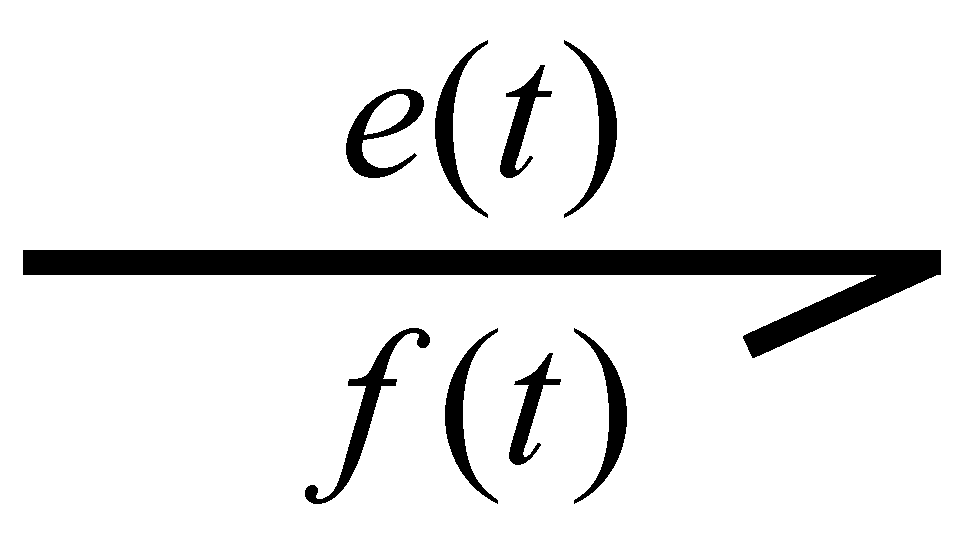

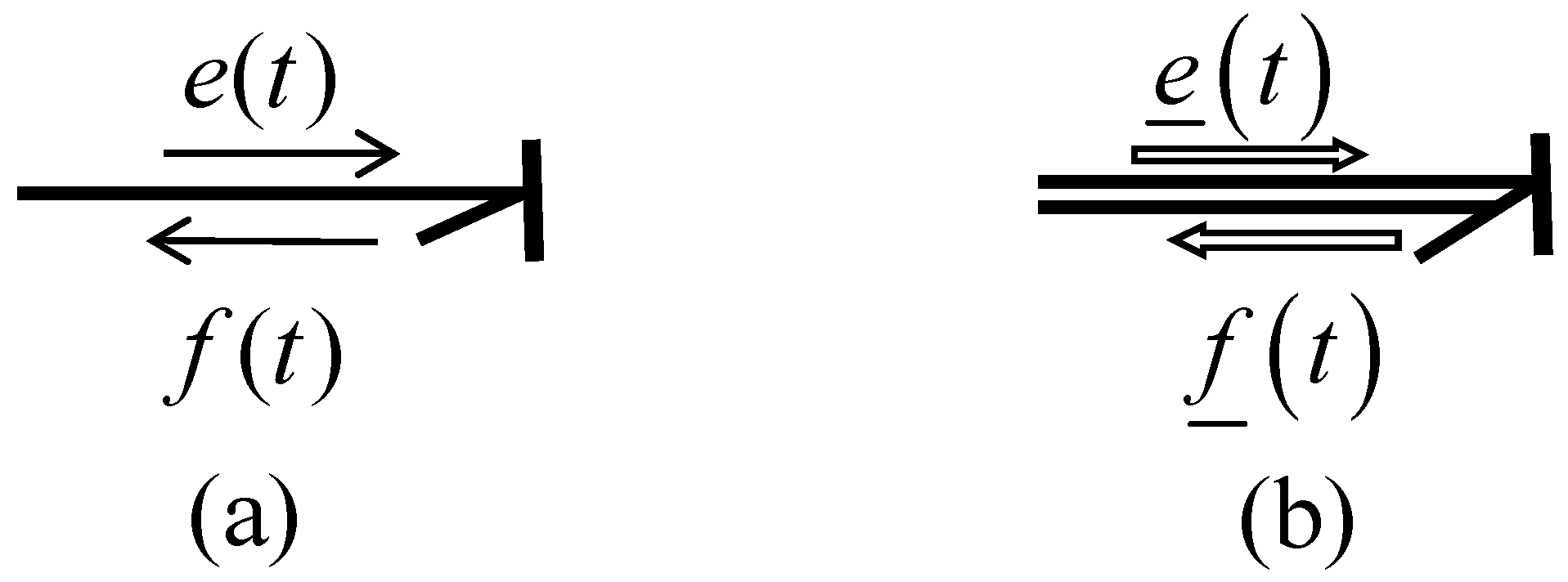






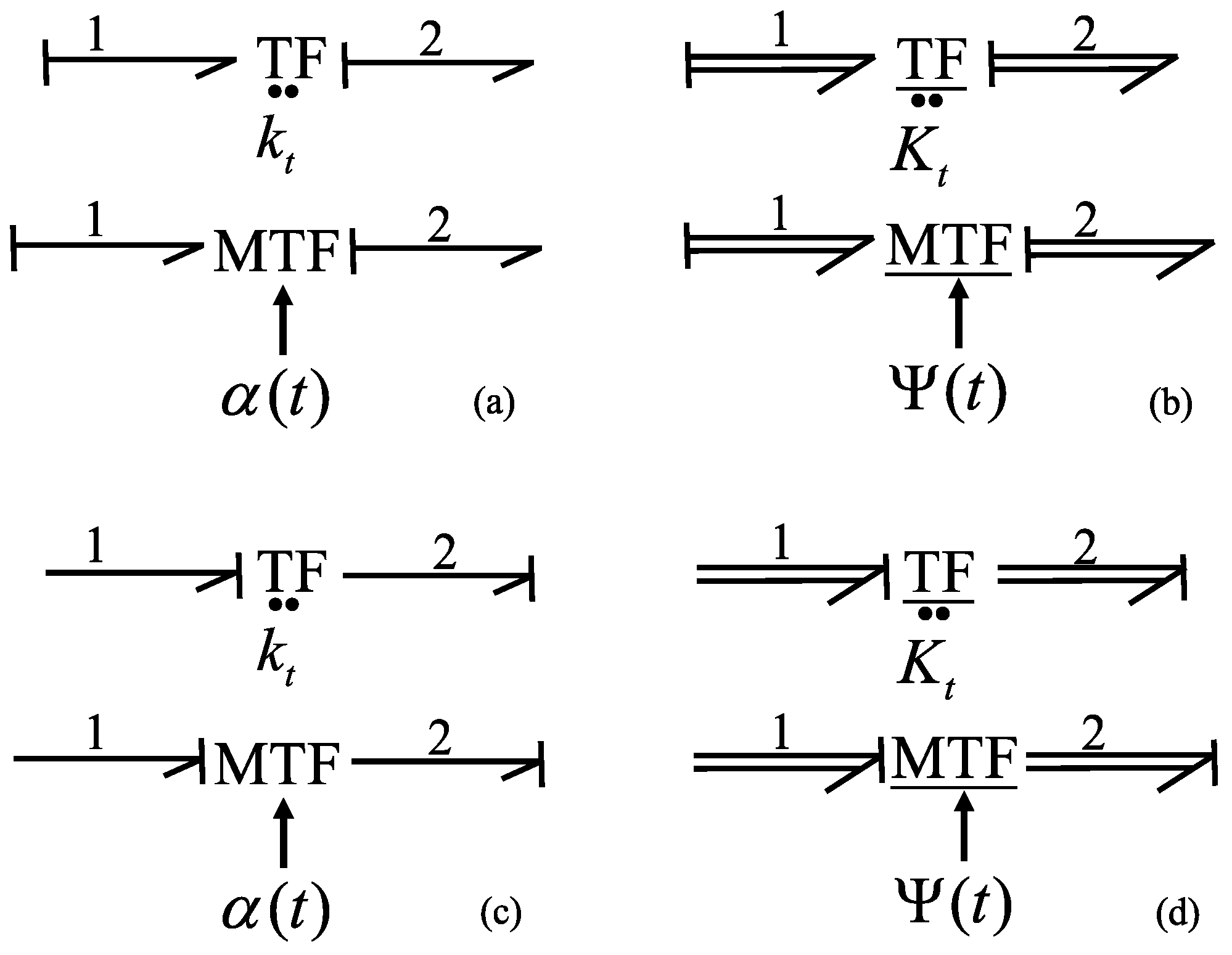
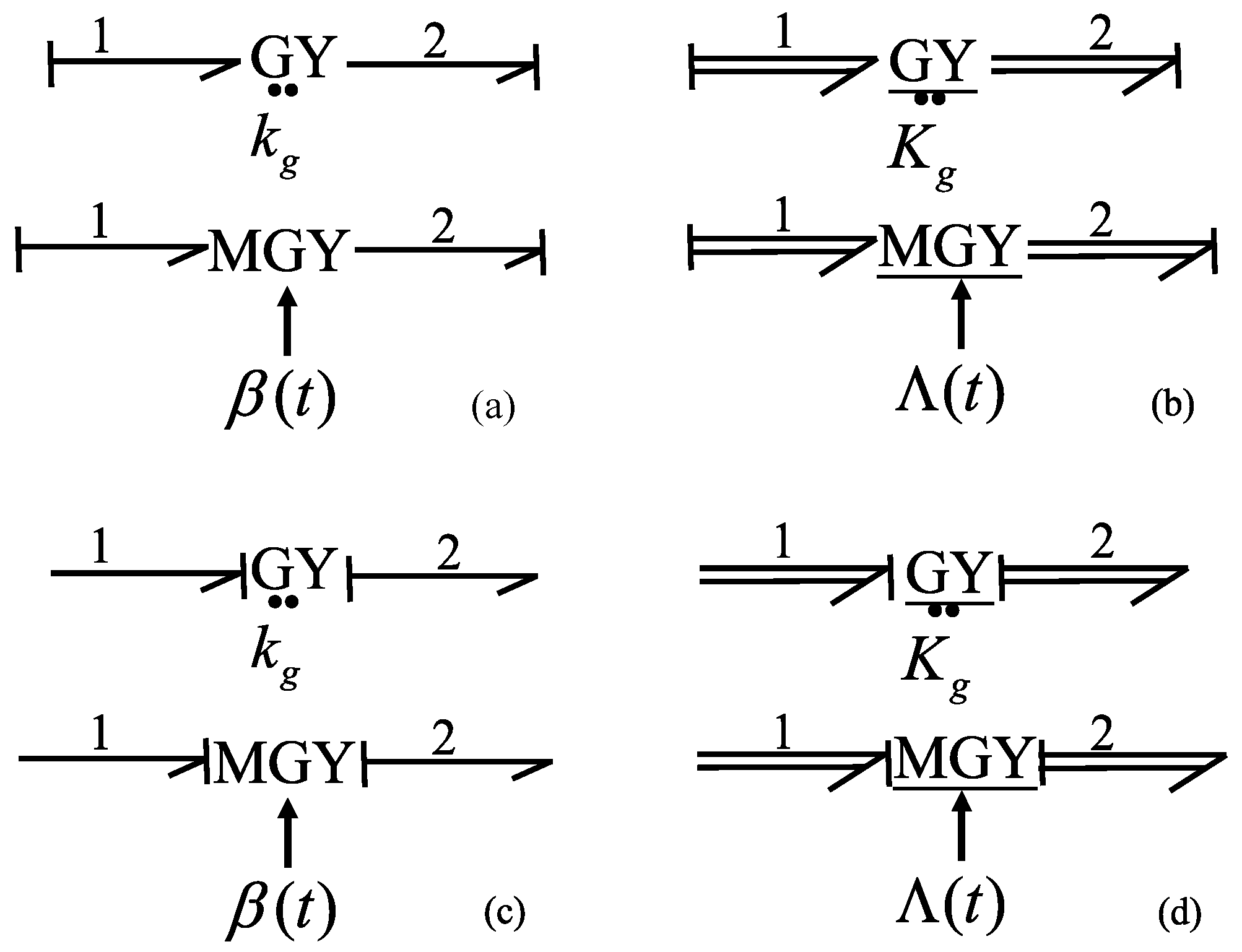


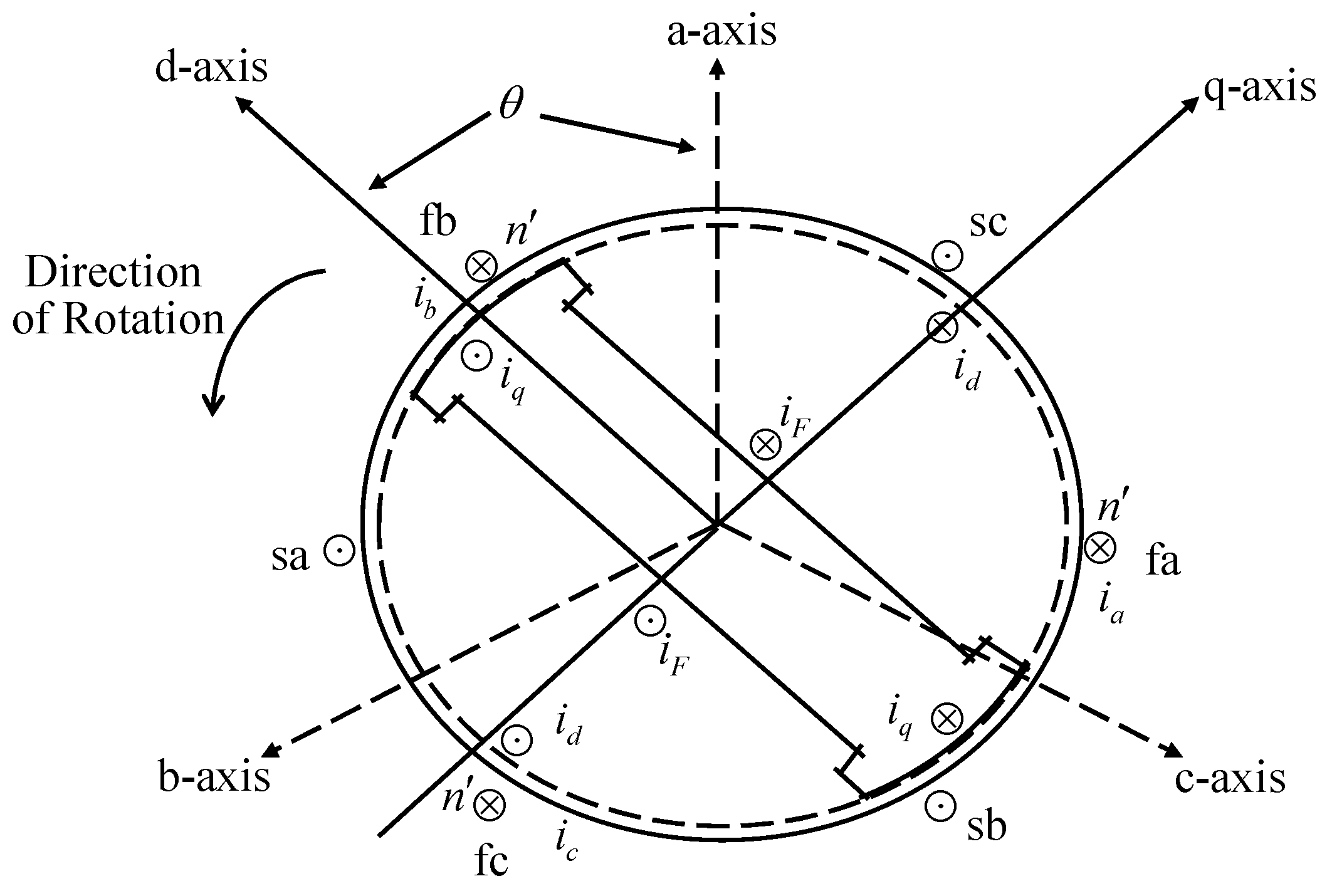

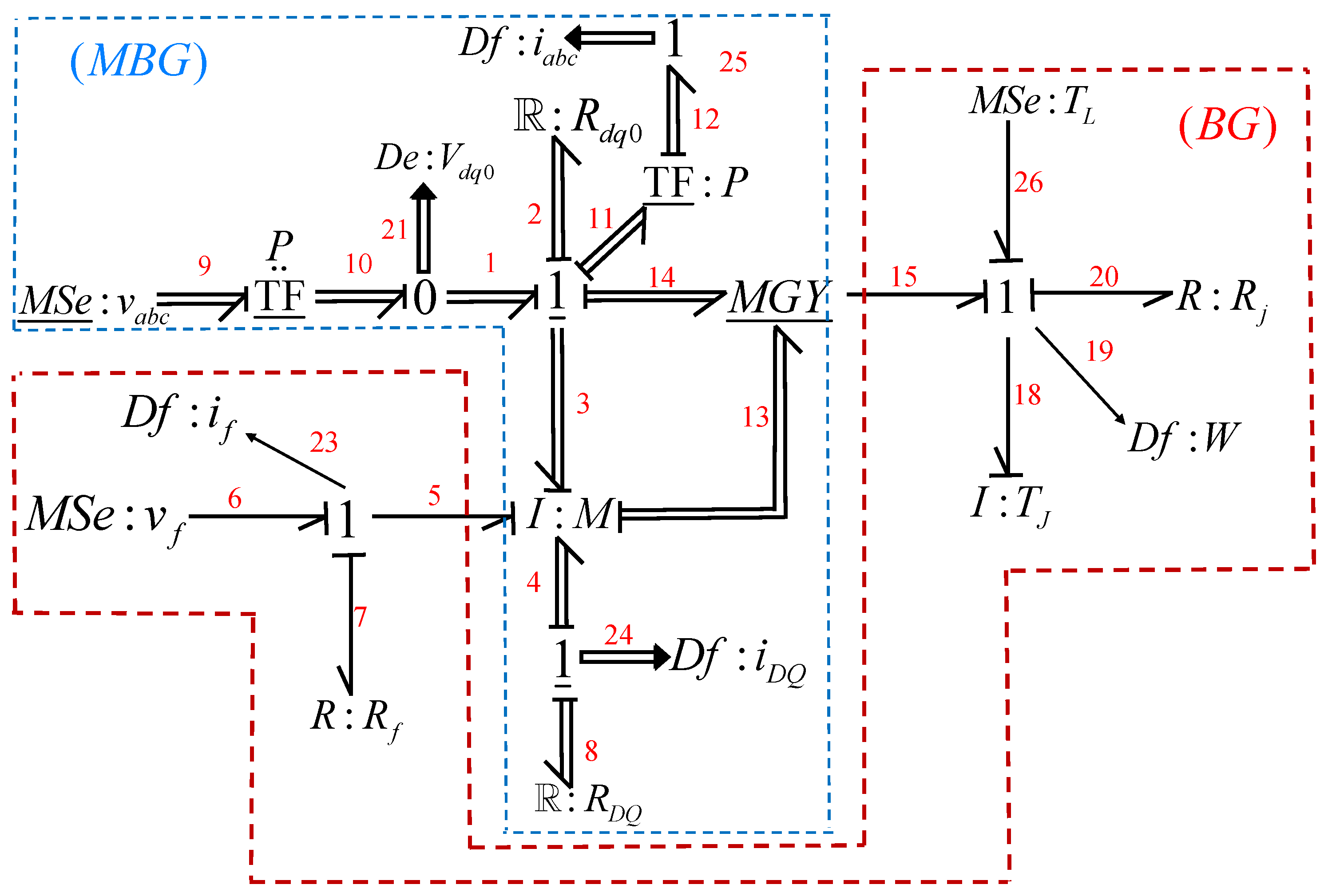

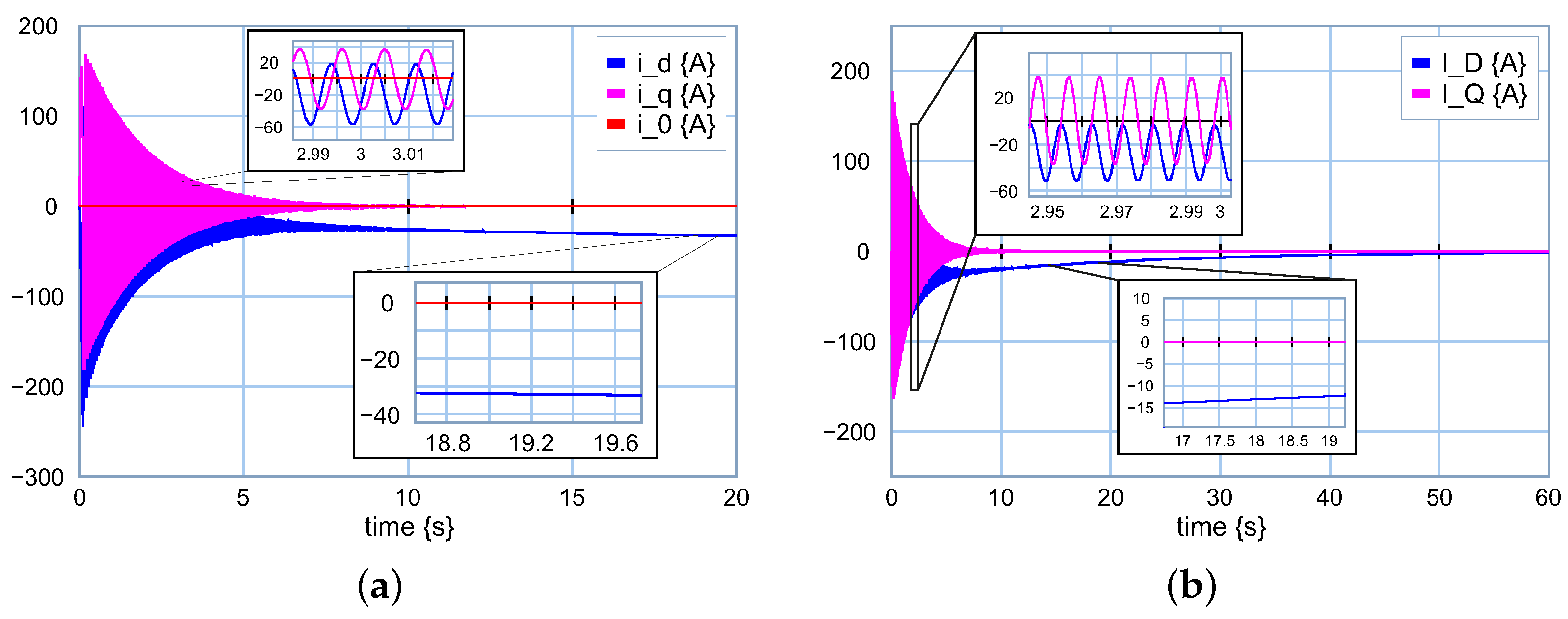



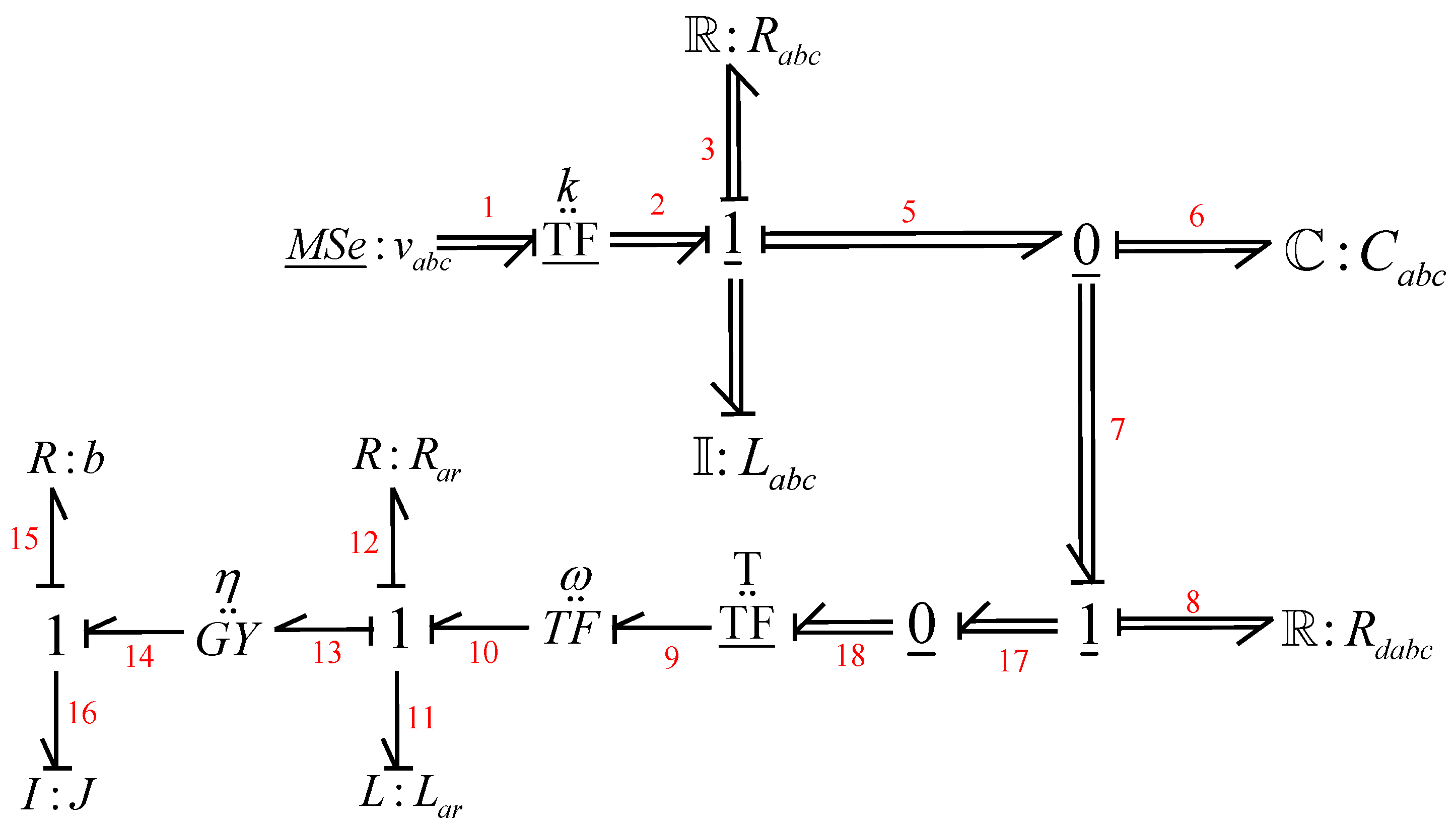
| System | Effort | Flow |
|---|---|---|
| Electrical | Voltage | Current |
| Mechanical | Force Torque | Velocity Ang. velocity |
| Hydraulic | Pressure | Volume flow rate |
| Thermodynamics | Temperature | Entropy flow |
| V | |||
| V | |||
| V | |||
| V | |||
| N·m | N·m·s | N·m·s |
Disclaimer/Publisher’s Note: The statements, opinions and data contained in all publications are solely those of the individual author(s) and contributor(s) and not of MDPI and/or the editor(s). MDPI and/or the editor(s) disclaim responsibility for any injury to people or property resulting from any ideas, methods, instructions or products referred to in the content. |
© 2023 by the authors. Licensee MDPI, Basel, Switzerland. This article is an open access article distributed under the terms and conditions of the Creative Commons Attribution (CC BY) license (https://creativecommons.org/licenses/by/4.0/).
Share and Cite
Gonzalez-Avalos, G.; Gallegos, N.B.; Ayala-Jaimes, G.; Garcia, A.P.; Ferreyra García, L.F.; Rodríguez, A.J.P. Modeling and Simulation of Physical Systems Formed by Bond Graphs and Multibond Graphs. Symmetry 2023, 15, 2170. https://doi.org/10.3390/sym15122170
Gonzalez-Avalos G, Gallegos NB, Ayala-Jaimes G, Garcia AP, Ferreyra García LF, Rodríguez AJP. Modeling and Simulation of Physical Systems Formed by Bond Graphs and Multibond Graphs. Symmetry. 2023; 15(12):2170. https://doi.org/10.3390/sym15122170
Chicago/Turabian StyleGonzalez-Avalos, Gilberto, Noe Barrera Gallegos, Gerardo Ayala-Jaimes, Aaron Padilla Garcia, Luis Flaviano Ferreyra García, and Aldo Jesus Parente Rodríguez. 2023. "Modeling and Simulation of Physical Systems Formed by Bond Graphs and Multibond Graphs" Symmetry 15, no. 12: 2170. https://doi.org/10.3390/sym15122170
APA StyleGonzalez-Avalos, G., Gallegos, N. B., Ayala-Jaimes, G., Garcia, A. P., Ferreyra García, L. F., & Rodríguez, A. J. P. (2023). Modeling and Simulation of Physical Systems Formed by Bond Graphs and Multibond Graphs. Symmetry, 15(12), 2170. https://doi.org/10.3390/sym15122170







